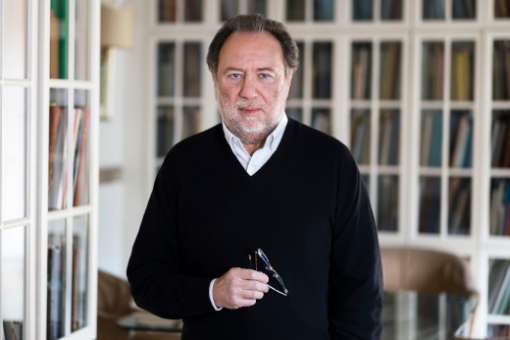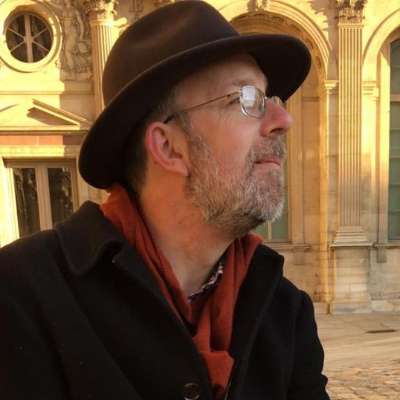During his tenure as chief conductor of the Gewandhausorchester Leipzig from 2005 to 2016, Riccardo Chailly undertook what amounted to a re-evaluation of Beethoven’s music, performing and recording the cycle of nine symphonies, taking a fresh, invigorating approach. During this anniversary year, Chailly revisits this epic cycle with the orchestra of his La Scala home base, the Filarmonica della Scala. As they departed on a European tour, I caught up with Chailly to reflect on his relationship with Beethoven’s symphonic cycle.
MP: When you performed the cycle with the Leipzig Gewandhaus, you took a very lively approach to tempi and textures – almost like “historically informed” performance practice. How did you arrive at this “lean, clean” palette for Beethoven?
RC: The vibrant Beethovenian tradition of the Leipzig Gewandhaus Orchestra goes back to the time when Beethoven was still alive. Being Gewandhauskapellmeister means becoming part of this glorious tradition and being continuously challenged by the four great Bs: Bach, Beethoven, Brahms and Bruckner, who played such an important role in the history of this orchestra. When I was Music Director, I decided to tackle a new full Beethoven cycle. I gathered together the orchestral players, explaining to them my vision based on the composer’s intentions, and they were immediately enthusiastic about it. After all these years I am very happy that this experience has become for some a new point of reference for Beethovenian interpretation.
Now that you are performing the cycle with the Filarmonica della Scala, has your approach to these works changed from your Leipzig tenure?
Both are excellent orchestras, each with its own strong identity, and today I can tackle a new cycle making less radical choices, with more freedom. The Filarmonica, since its beginnings, had a long Beethovenian tradition and it’s following me on this new journey in an exemplary manner.
How do you approach these works when performing them as an integrated cycle?
The cyclical aspect is fundamental, not only within the individual symphonies, but also in the entire sequence of the nine, beyond obvious cases like the Marcia funèbre of the Eroica, where the horn rings out exactly the famous opening motif of the Fifth. Sometimes pairs of symphonies that appear to be opposite are instead subtly connected: the Seventh, whose home key is A major, uses surprisingly often the key of F major, which is not at all complementary. The Eighth, which is in F major, reciprocates by making extensive use of the key of A major. Obviously such an approach to the cycle is not compatible with the traditional classification of main and secondary works. All nine symphonies, each from the very first notes of their distinctive beginnings, are unique masterpieces, whose foundations rest on the ones that came before and which pave the way for the next. And the fact that the Second, the Fourth, the Sixth and the Eighth seem to be more joyful, lighter and perhaps more classical compared to the Eroica, the Fifth, the Seventh or the Ninth, has nothing to do with a value judgement.
How far can we trust Beethoven’s markings, especially his metronome markings? Which editions of the score do you use (and why)?
Much has been debated, written and hypothesised about Beethoven’s metronome markings to indicate the number of beats per minute and therefore the tempo he had in mind for his symphonies. Their clarity has remained for a long time irreconcilable with a performing practice that connected meaningfulness to wideness of breath. The tendency of many modern orchestras to play slowly is responsible for the rest: it was thought that he meant half tempo; that his indications were utopian, not really directives. I have studied many editions and the Urtext, then I went back to the old Peters edition, that I have prepared afresh. It is drafted in an extremely clear way and it’s a solid foundation for our material. In addition, I have thoroughly examined the critical edition by Igor Markevitch and, in the 1980s, the notations that George Szell made in his scores. From all this, my vision was born.

The first two symphonies are very “classical” in nature – almost like Haydn – but then we arrive at the Eroica, like a lightning bolt into the symphonic world. With such a famous work as the Eroica – or the Fifth – is it still possible to “shock” the audience?
There has been a long reflection on how Beethoven has his roots in Haydn’s classicism, a composer of whom Beethoven was a pupil and whose “London” symphonies, in many respects, served as a model for him. It was a long journey that brought Beethoven to the symphonic genre. The work on his First lasted from 1795 to 1800. During the same period he experimented with the four-movement form in his piano trios and the piano sonatas, which already demonstrate a symphonic style. With the Second, the misunderstandings began. It was immediately judged as a backwards step compared with the audacity of the First. For a long time the Second has been considered more linear than the First, a sort of last tribute to the old generation before the Eroica opened new horizons. The finale is incredibly modern, which must have been shocking for audiences at the time. Tempo: 152 minims per minute. The Eroica is as challenging for listeners today as it was for those of Beethoven's time. In the first movement he, for the first time in the symphonic field, uses syncopations as propellers, thus opening up new musical horizons: this symphony was supposed to be a champion for a strong and self-assured humanity facing eternity, and it was. The brutal hemiolas, that unhinge the tempo, are always a surprise, even to the modern listener.
The Fourth and the Eighth are often underrated when considered alongside their mighty neighbours. Do these “Cinderella” symphonies suffer from being programmed alongside the others or can they inform the way we hear them?
Thus far the Fourth has struggled to establish itself in the repertoire, stuck as it is between the heroic Third and the revolutionary Fifth, also because of the cliché marking it as the most harmless among the light, even-numbered symphonies. Once again, the key to access its hidden meaning is found in the notes. The last movement is an Allegro ma non troppo, hence fast, but not too fast. This may be, but if you actually stick to the stated metronome markings, this “not too fast” becomes practically unplayable.
The semiquavers articulate themselves ethereally, sparkling in a score already immersed in a summer night’s dream. You can then understand what Mendelssohn meant when he said that this symphony was “the most romantic”. The dance of the elves in the finale exudes an elegance that is born of precision and truly represents the joyful counterpoint to the drama of the Eroica. Here the primordial strength of the syncopation, the relentlessness of the transitions – previously only found in the Waldstein Sonata – and the crystalline magic of the thematic material eliminate any trace of that comfortable lightness that had made the Fourth the Cinderella among Beethoven’s symphonies. The Eighth is also a miracle of beauty. With Beethoven, nothing is left to chance and certainly nothing is harmless. If you listen closely, Beethoven seems to subvert the rhythm only in passing, but develops the same volatility as the Eroica, only this time in a context that in its eccentricity denies any drama.
Which symphony or movement is the most problematic/ the most difficult to “get right”? And how do you solve these problems?
I adore the Eighth. If you start the first movement completely alla breve, which should be done with 69 beats, I think that it transforms the work into something that has much of the spirit of dance music. And then there is the delicious second movement, a Scherzo. But the finale is the most extreme point in all the nine symphonies. The metronome is almost paradoxical, 84 beats, which is really at the limit for the performer. In fact it goes beyond it. I have recorded the original metronome and I admire the orchestra’s ability to be able to tackle it at such speed.
Do you have a personal favourite movement from the nine which you always look forward to conducting/ hearing?
My favourite movement is the chronology of all nine symphonies, for the absolute coherence that binds them in their succession. Each symphony cannot be separated from the one before and is intimately linked to the next.


